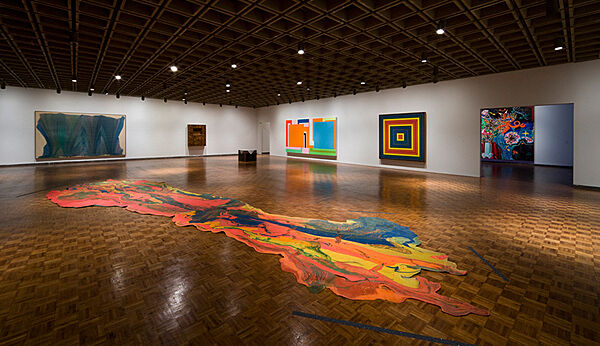Synthetic
Jan 22–Apr 19, 2009
Synthetic
In the 1960s, artists began to use a range of new products that changed the possibilities of painting and sculpture. Synthetic polymer paints--popularly known as acrylics--became the first widely used alternative to oil, a material that had dominated painting since the Renaissance. Unlike oil, these water-based colors dried quickly and to a uniform surface. Artists such as Morris Louis explored their physical properties, especially their ability to stain and be poured directly on raw canvas. Medium and support could merge and become equal. These new approaches advanced one of the fundamental ideas of modern painting: acknowledging flatness as part of a painting’s status as object and picture. Other artists--those not working abstractly--explored how synthetic and commercial materials could impact an image’s meaning.
The new emphasis on surface took on metaphorical as well as material importance. Andy Warhol inextricably merged process with subject matter in his screen-printed paintings. Richard Artschwager used commercially made materials to create a slick, plastic look that was integral to that which was represented. This exhibition explores how new synthetic products not only allowed for a new look but also aligned with subject matter to change the direction of postwar American art.
This exhibition is organized by Carter E. Foster, curator of drawings.
In the News
“The iconic might and idiosyncratic depth of the [Whitney’s] permanent collection is showcased, while new relationships are forged between works.”
--The Village Voice

